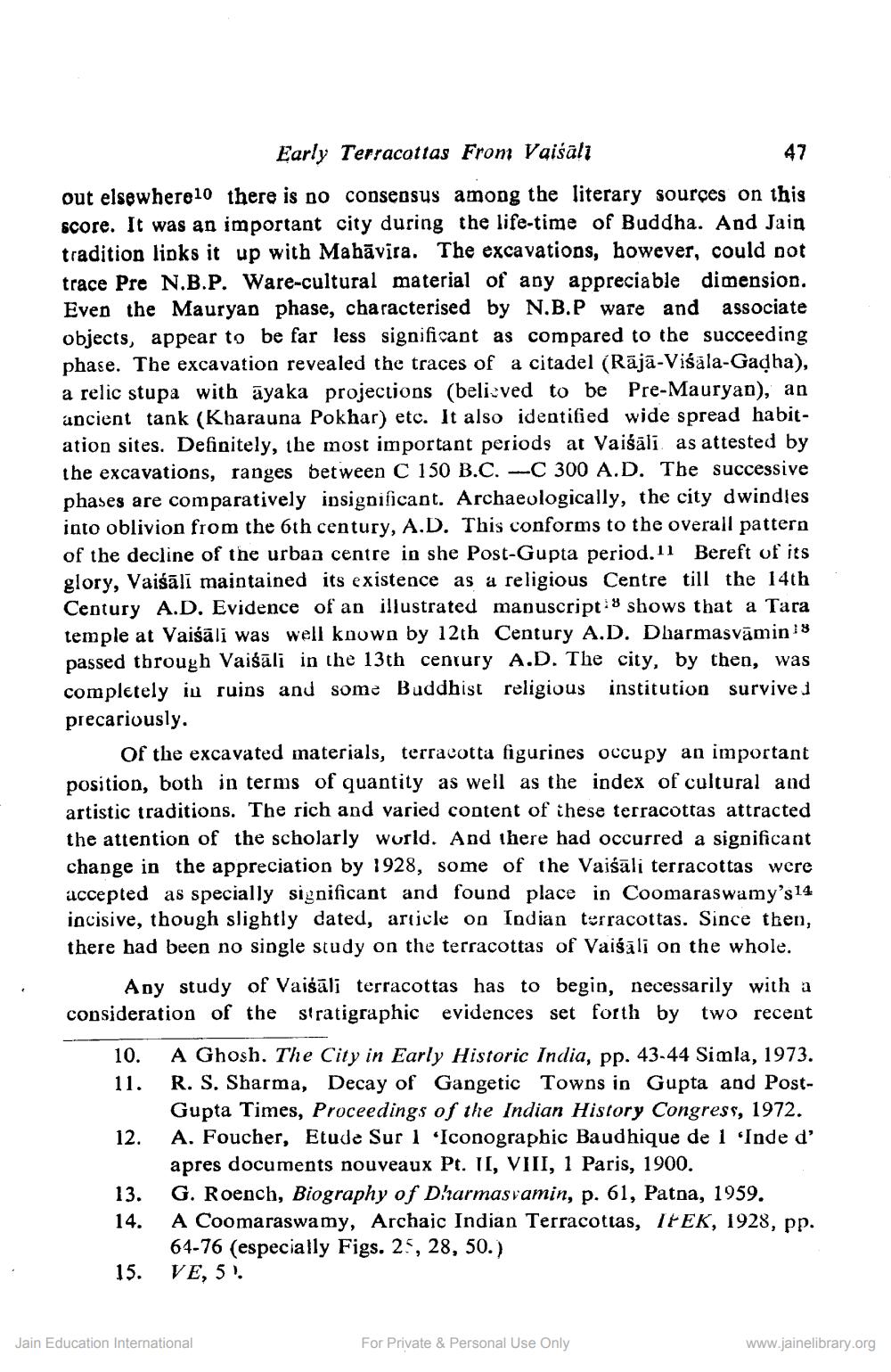________________
Early Terracottas From Vaiśāli
out elsewhere lo there is no consensus among the literary sources on this score. It was an important city during the life-time of Buddha. And Jain tradition lipks it up with Mahāvira. The excavations, however, could not trace Pre N.B.P. Ware-cultural material of any appreciable dimension. Even the Mauryan phase, characterised by N.B.P ware and associate objects, appear to be far less significant as compared to the succeeding phase. The excavation revealed the traces of a citadel (Rājā-Viśāla-Gadha), a relic stupa with āyaka projections (believed to be Pre-Mauryan), an ancient tank (Kharauna Pokhar) etc. It also identified wide spread habitation sites. Definitely, the most important periods at Vaiśāli as attested by the excavations, ranges between C 150 B.C. --C300 A.D. The successive phases are comparatively insignificant. Archaeologically, the city dwindles into oblivion from the 6th century, A.D. This conforms to the overall pattern of the decline of the urban centre in she Post-Gupta period.11 Bereft of its glory, Vaiśāli maintained its existence as a religious Centre till the 14th Century A.D. Evidence of an illustrated manuscript:8 shows that a Tara temple at Vaiśāli was well known by 12th Century A.D. Dharmasvāmin 18 passed through Vaišāli in the 13th century A.D. The city, by then, was completely in ruins and some Buddhist religious institution survived precariously.
of the excavated materials, terracotta figurines occupy an important position, both in terms of quantity as well as the index of cultural and artistic traditions. The rich and varied content of these terracottas attracted the attention of the scholarly world. And there had occurred a significant change in the appreciation by 1928, some of the Vaiśāli terracottas were accepted as specially significant and found place in Coomaraswamy's 14 incisive, though slightly dated, article on Indian terracottas. Since then, there had been no single study on the terracottas of Vaiśāli on the whole.
Any study of Vaiśāli terracottas has to begin, necessarily with a consideration of the stratigraphic evidences set forth by two recent
10. 11.
12.
A Ghosh. The City in Early Historic India, pp. 43-44 Simla, 1973. R. S. Sharma, Decay of Gangetic Towns in Gupta and PostGupta Times, Proceedings of the Indian History Congress, 1972. A. Foucher, Etude Sur 1 'Iconographic Baudhique de 1 Inde d' apres documents nouveaux Pt. II, VIII, 1 Paris, 1900. G. Roench, Biography of Dharmasvamin, p. 61, Patna, 1959. A Coomaraswamy, Archaic Indian Terracottas, IPEK, 1928, pp. 64-76 (especially Figs. 25, 28, 50.) VE, 5!
13.
.
15.
Jain Education International
For Private & Personal Use Only
www.jainelibrary.org




